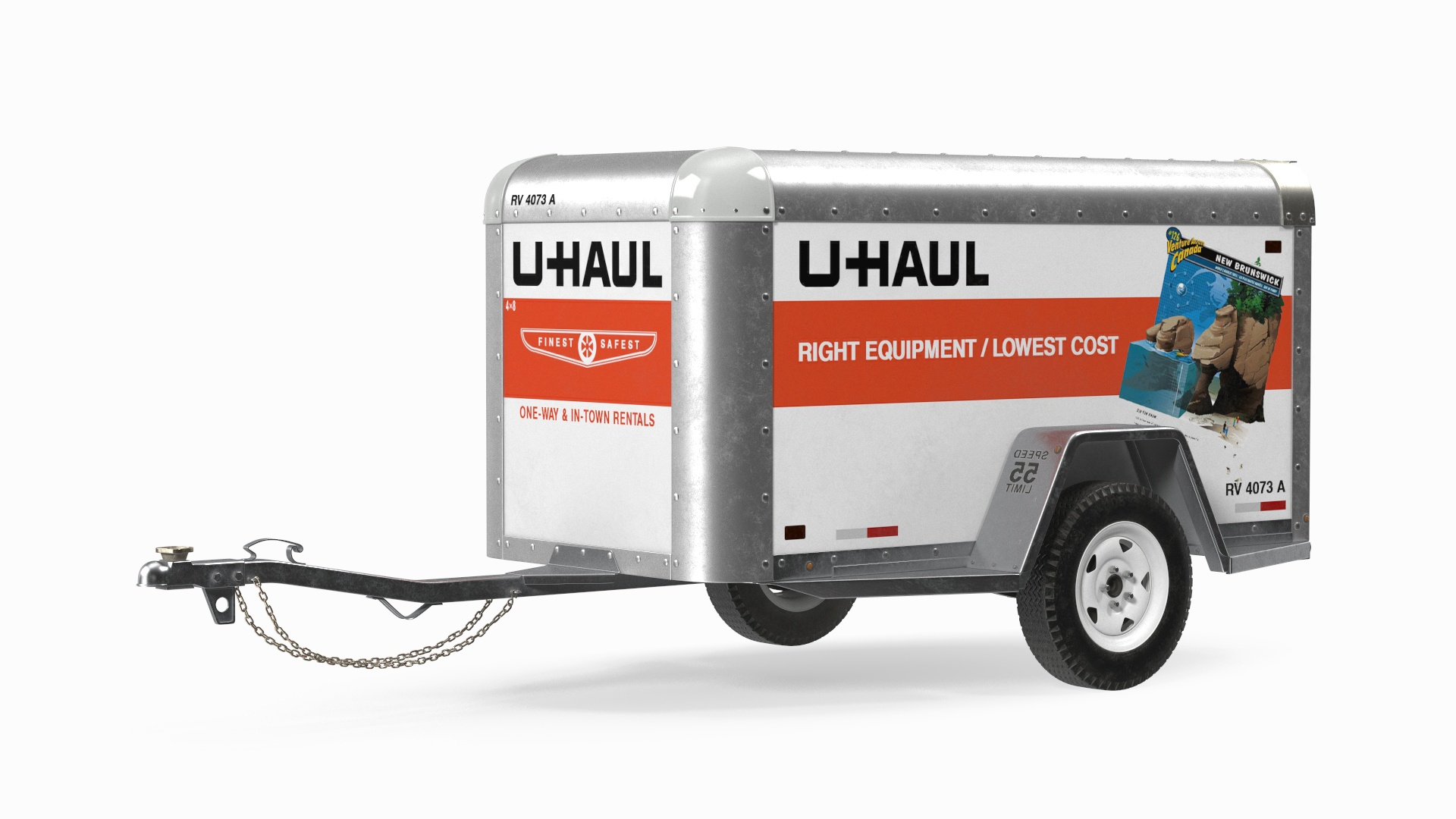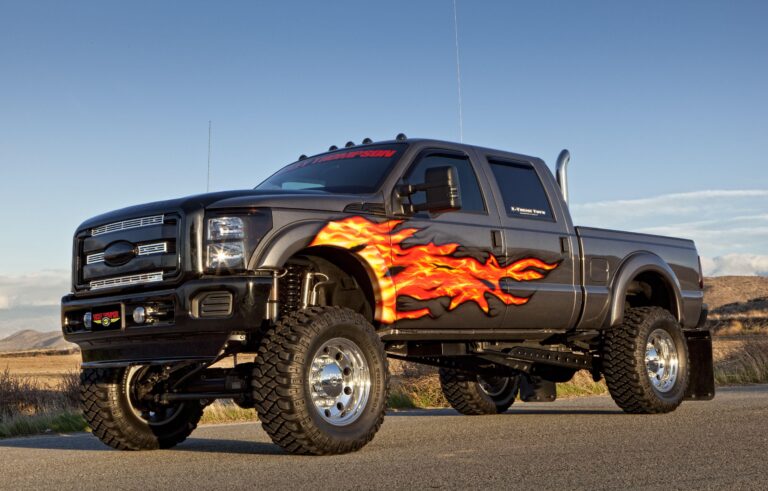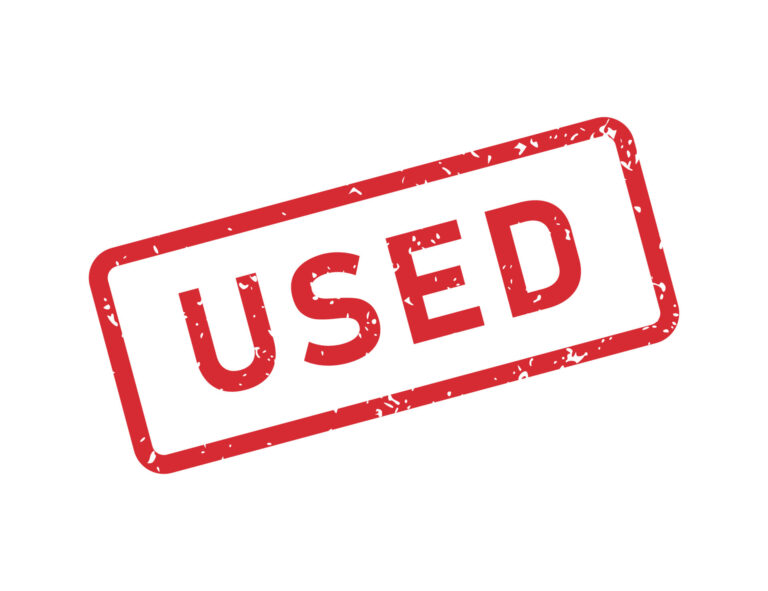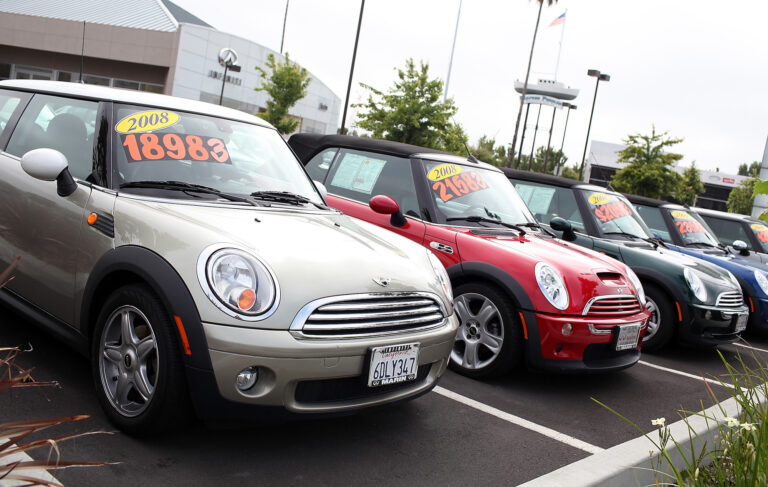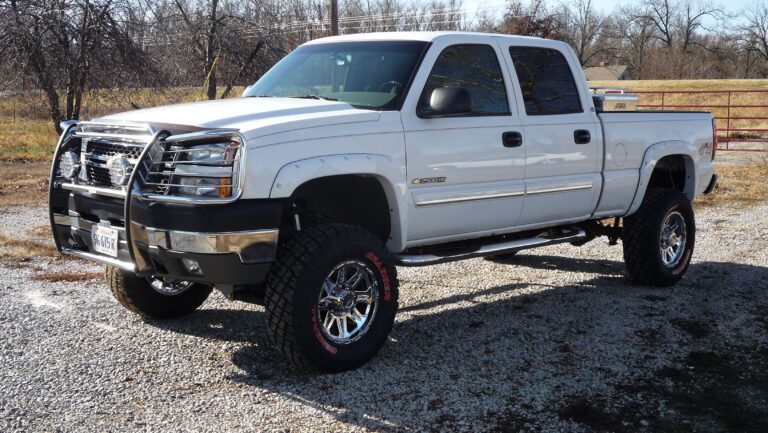Trailer Truck Body Parts Name: A Comprehensive Guide to the Anatomy of a Modern Workhorse
Trailer Truck Body Parts Name: A Comprehensive Guide to the Anatomy of a Modern Workhorse cars.truckstrend.com
The mighty trailer truck, a cornerstone of global logistics, effortlessly transports goods across continents, linking producers to consumers. While often seen as a single unit, a trailer truck is, in fact, a sophisticated assembly of specialized parts, each meticulously designed to perform a critical function. Understanding the anatomy of a trailer – from its foundational structural components to its intricate electrical systems – is essential for anyone involved in transportation, logistics, maintenance, or even just for those curious about these mechanical marvels.
This comprehensive guide delves into the various body parts of a trailer truck, explaining their purpose, importance, and key considerations. By dissecting the trailer piece by piece, we aim to provide a detailed understanding that enhances operational efficiency, ensures safety, and prolongs the life of these indispensable vehicles.
Trailer Truck Body Parts Name: A Comprehensive Guide to the Anatomy of a Modern Workhorse
I. The Structural Backbone: Foundation and Support Systems
At the core of every trailer is its robust structure, designed to withstand immense loads and the rigors of the road. These components provide the framework upon which all other parts are built.
1. Chassis (Frame)
The chassis is the main structural framework of the trailer, typically made from high-strength steel or aluminum. It forms the skeleton, supporting the entire weight of the cargo and the trailer itself.
- Function: Provides rigidity and strength, connecting all other components and transferring loads to the axles.
- Importance: Crucial for the trailer’s structural integrity, load-carrying capacity, and overall safety.
- Considerations: Material choice (steel for heavy duty, aluminum for weight savings), design (straight frame, drop deck).

2. Main Beams (Longitudinal Members)
These are the primary load-bearing beams that run the length of the trailer, forming part of the chassis. They are often I-beam shaped for maximum strength-to-weight ratio.
- Function: Directly support the floor and cargo, distributing weight along the trailer’s length.
- Importance: Essential for preventing sagging and ensuring even load distribution.
.jpeg)
3. Crossmembers
Horizontal beams that connect the main beams, forming a grid-like structure. They provide lateral support to the chassis and directly support the trailer floor.
- Function: Reinforce the main beams, prevent twisting, and provide a mounting surface for the floor.
- Importance: Contribute significantly to the trailer’s torsional rigidity and floor stability.

4. Kingpin
A critical coupling device, the kingpin is a sturdy steel pin protruding from the underside of the trailer’s front end. It locks into the fifth wheel coupling on the tractor (truck).
- Function: Forms the pivotal connection point between the trailer and the tractor, allowing articulation.
- Importance: The sole mechanical link that connects the trailer to the truck, ensuring secure towing.
- Considerations: Regular inspection for wear, proper lubrication for smooth operation.
5. Landing Gear (Landing Legs)
Retractable support legs located at the front of the trailer, used when the trailer is uncoupled from the tractor.
- Function: Stabilize the trailer when it’s parked independently, allowing it to stand upright and support its own weight, plus any cargo.
- Importance: Prevents the trailer from tipping over during loading/unloading or while parked.
- Considerations: Manual or powered (crank or hydraulic), weight capacity, proper extension and retraction.
II. Cargo Management and Protection Systems
These components are designed to contain, protect, and secure the cargo being transported. Their configuration varies significantly depending on the type of trailer.
1. Floor
The surface on which cargo rests. Materials vary widely based on cargo type.
- Function: Provides a stable, durable surface for cargo placement.
- Importance: Must be strong enough to support the maximum intended load and resist wear and tear.
- Considerations: Wood (oak, laminated hardwood), aluminum, steel, or composite materials; anti-slip properties, drainage.
2. Side Walls
Vertical panels that enclose the sides of the cargo area.
- Function: Contain the cargo and protect it from external elements.
- Importance: Contribute to the structural integrity of enclosed trailers (dry vans, reefers) and provide advertising space.
- Considerations: Aluminum, fiberglass reinforced plywood (FRP), or steel for durability and insulation.
3. Front Wall (Bulkhead)
The solid wall at the very front of the trailer, closest to the tractor.
- Function: Protects the cargo from shifting forward during sudden braking and protects the tractor/driver from cargo intrusion.
- Importance: A critical safety feature for both cargo and personnel.
4. Rear Doors/Gate
The entry/exit point for cargo at the back of the trailer.
- Function: Facilitate loading and unloading, secure cargo when closed.
- Importance: Must be robust, secure, and weather-tight.
- Considerations: Swing doors, roll-up doors, liftgates; security features (latches, locks).
5. Roof
The top covering of enclosed trailers.
- Function: Protects cargo from weather elements (rain, sun, snow) and provides structural rigidity.
- Importance: Essential for maintaining cargo integrity and temperature control (for reefers).
- Considerations: Aluminum, translucent fiberglass (for light), one-piece vs. segmented.
6. Tarpaulins/Curtains (for Flatbeds & Curtainsides)
Heavy-duty covers used on open trailers.
- Function: Protect cargo from weather and provide some level of security. Curtainsides offer quick side access.
- Importance: Flexible cargo protection solution for various load sizes and types.
III. Running Gear and Dynamics: Movement and Control
These components are responsible for the trailer’s mobility, braking, and interaction with the road.
1. Axles
The central shafts on which the wheels are mounted. Trailers typically have tandem (two) or tridem (three) axles.
- Function: Support the weight of the trailer and cargo, transfer motion from the wheels to the chassis.
- Importance: Critical for weight distribution, stability, and carrying capacity.
- Considerations: Number of axles (determines load capacity), axle spacing (affects maneuverability and bridge laws).
2. Wheels and Tires
The interface between the trailer and the road.
- Function: Enable movement, support weight, and provide traction.
- Importance: Directly impact fuel efficiency, ride quality, and safety.
- Considerations: Tire pressure monitoring, tread depth, proper sizing, dual vs. super single tires.
3. Braking System (Air Brakes, ABS)
A complex system that uses compressed air to apply brakes. Anti-lock Braking System (ABS) is a safety enhancement.
- Function: Slows down and stops the trailer safely. ABS prevents wheel lock-up during hard braking.
- Importance: Paramount for safety, preventing collisions and jackknifing.
- Considerations: Regular inspection of air lines, brake chambers, slack adjusters, drums/rotors, and pads.
4. Suspension System (Air Ride, Spring)
Connects the axles to the chassis, absorbing road shocks.
- Function: Provides a smoother ride, protects cargo from vibrations, and maintains tire contact with the road.
- Importance: Enhances cargo protection, reduces wear on the trailer, and improves driver comfort.
- Considerations: Air ride (air bags) for sensitive cargo and smoother ride; spring suspension (leaf springs) for durability and lower maintenance.
5. Mud Flaps
Flexible sheets positioned behind the wheels.
- Function: Prevent rocks, mud, water, and debris from being thrown up by the tires, protecting other vehicles and the trailer itself.
- Importance: Legal requirement in many regions, enhances safety for following traffic.
IV. Visibility and Connectivity: Lighting and Electrical Systems
These systems ensure the trailer is visible to others and communicates effectively with the tractor.
1. Lighting (Taillights, Brake Lights, Turn Signals, Marker Lights)
Various lights positioned around the trailer.
- Function: Ensure the trailer is visible, indicate its presence, width, length, and intended maneuvers to other road users.
- Importance: Crucial for road safety, especially at night or in adverse weather conditions.
- Considerations: LED vs. incandescent, proper wiring, compliance with DOT regulations.
2. Reflectors
Passive reflective devices that enhance visibility.
- Function: Reflect light from other vehicles, making the trailer visible even when its lights are off.
- Importance: A vital safety feature for parked trailers or during power failures.
3. Wiring Harness
The network of electrical cables that connect all the lights and electrical components to the tractor.
- Function: Transmits power and signals from the tractor to the trailer’s electrical systems.
- Importance: Ensures proper functioning of all lights and auxiliary electrical devices.
4. Glad Hands (Air Line Connectors)
Couplings that connect the trailer’s air brake lines to the tractor’s air supply.
- Function: Supply compressed air from the tractor to the trailer’s braking and suspension systems.
- Importance: Essential for trailer braking and air ride suspension operation.
5. Electrical Connector (Pigtail)
A multi-pin electrical cable that connects the trailer’s wiring harness to the tractor’s electrical system.
- Function: Transmits electrical power for lights, ABS, and other auxiliary systems.
- Importance: Ensures all electrical components on the trailer function in sync with the tractor.
V. Safety, Security, and Aerodynamics
Beyond the core functional parts, several other components enhance safety, secure cargo, and improve efficiency.
1. DOT Bumper (Rear Underride Protection Device)
A robust steel bar located at the very rear of the trailer.
- Function: Prevents passenger vehicles from underriding the trailer in a rear-end collision, protecting occupants.
- Importance: A critical safety device mandated by Department of Transportation (DOT) regulations.
2. Rub Rails
Horizontal steel or aluminum rails running along the lower exterior sides of the trailer.
- Function: Protect the trailer’s side walls from minor impacts (e.g., against loading docks) and provide tie-down points for cargo securement.
- Importance: Extends the life of the trailer’s body and offers versatility for securing loads.
3. Load Securement Devices (D-rings, E-track, Tie-down Winches)
Various hooks, tracks, and winches integrated into the floor or walls.
- Function: Provide attachment points for straps, chains, and other securement devices to prevent cargo shifting.
- Importance: Crucial for cargo safety, preventing damage to goods, and ensuring compliance with cargo securement regulations.
4. Toolbox
An external compartment mounted on the chassis.
- Function: Provides storage for tools, chains, straps, and other equipment.
- Importance: Keeps essential items organized and readily accessible.
5. Spare Tire Carrier
A bracket or winch system designed to hold a spare tire.
- Function: Securely stores a spare tire for roadside emergencies.
- Importance: Enables quick tire changes, minimizing downtime.
6. Side Skirts (Aerodynamic Devices)
Panels extending downwards from the trailer’s side frame, between the wheels.
- Function: Reduce aerodynamic drag by managing airflow around the trailer’s undercarriage, improving fuel efficiency.
- Importance: Significant impact on fuel economy, especially for long-haul operations.
Practical Advice: Maintenance and Inspection Tips
Understanding the parts is only the first step; proper care ensures their longevity and your safety.
- Pre-Trip Inspections: Before every journey, conduct a thorough visual inspection of all visible parts:
- Lights: Check all lights (brake, turn, marker, tail, reflectors) for functionality and cleanliness.
- Tires: Verify proper inflation, inspect tread depth, and check for cuts, bulges, or uneven wear.
- Brakes: Look for visible damage to air lines, brake chambers, and slack adjusters. Listen for air leaks.
- Kingpin & Fifth Wheel: Inspect for excessive wear and ensure proper lubrication.
- Landing Gear: Check for smooth operation and signs of damage.
- Cargo Securement: Confirm all load securement devices are tight and secure.
- Body: Look for dents, cracks, or loose panels on the walls, roof, and doors.
- Regular Maintenance: Adhere to manufacturer-recommended maintenance schedules for:
- Brake Adjustments: Ensure brakes are properly adjusted for optimal performance.
- Lubrication: Keep moving parts (kingpin, landing gear, suspension components) adequately lubricated.
- Suspension Check: Inspect air bags for leaks, and leaf springs for cracks or rust.
- Electrical System: Check for frayed wires, loose connections, and corrosion.
- Address Issues Promptly: Don’t delay repairs. Even minor issues can escalate into major safety hazards or costly breakdowns.
- Understand Load Limits: Always be aware of the Gross Vehicle Weight Rating (GVWR) and axle weight limits to prevent overloading, which stresses all body parts.
Estimated Price Table for Common Trailer Truck Body Parts
Please note: Prices are highly variable based on manufacturer, material, quality, specific model, new vs. used, and regional market conditions. The figures below are illustrative estimates and should be used as a general guide only. Always obtain specific quotes from reputable suppliers.
| Part Name | Estimated Price Range (USD) | Description |
|---|---|---|
| Kingpin | $150 – $400 | High-strength steel coupling pin for tractor connection. |
| Landing Gear Leg (Single) | $300 – $800 | Individual support leg for trailer when uncoupled. |
| Brake Drum (Single) | $100 – $300 | Component of the drum brake system. |
| Brake Shoe Set (per axle) | $150 – $400 | Friction material that presses against the drum. |
| Air Brake Chamber | $100 – $250 | Converts air pressure into mechanical force for braking. |
| LED Tail Light Assembly | $50 – $150 | Rear light unit including brake, tail, and turn functions. |
| LED Marker Light | $10 – $30 | Small lights for outlining trailer dimensions. |
| Mud Flap (Single) | $20 – $70 | Flexible sheet behind wheels to deflect debris. |
| Tire (Commercial Truck) | $300 – $600+ | Per tire, varies by size, brand, and type (e.g., steer, drive, trailer). |
| Side Skirt Panel (per ft) | $50 – $150 | Aerodynamic panel to reduce drag (per linear foot). |
| Floor Plank (per ft) | $10 – $50 | Varies by material (wood, aluminum, composite) and thickness. |
| DOT Bumper (Rear Guard) | $500 – $1,500 | Rear underride protection device. |
| Glad Hand Connector | $15 – $40 | Air line connector for trailer brakes. |
| Wiring Harness (Main) | $300 – $1,000+ | Complete electrical cable system, varies by length and complexity. |
| Suspension Air Bag | $100 – $300 | Component of air ride suspension system. |
| Spring (Leaf Spring) | $200 – $600 | Component of traditional spring suspension system. |
Frequently Asked Questions (FAQ)
Q1: What is the primary function of the Kingpin?
A1: The Kingpin’s primary function is to serve as the critical mechanical connection point between the trailer and the tractor’s fifth wheel, allowing the trailer to pivot and articulate behind the truck.
Q2: Why are side skirts used on trailers?
A2: Side skirts are aerodynamic devices used to reduce air turbulence and drag around the trailer’s undercarriage. Their main benefit is significantly improving fuel efficiency, especially for long-haul operations.
Q3: How often should trailer brakes be inspected?
A3: Trailer brakes should be inspected during every pre-trip inspection, and a more thorough professional inspection should be conducted regularly as per manufacturer guidelines, typically every 3-6 months or specific mileage intervals, to check wear on pads, drums, and air system components.
Q4: What’s the difference between air ride and spring suspension?
A4: Air ride suspension uses air bags filled with compressed air to absorb road shocks, providing a smoother ride ideal for fragile cargo and reducing wear on the trailer. Spring suspension uses leaf springs, which are more traditional, durable, and generally lower cost, but offer a firmer ride.
Q5: Can I customize my trailer’s body parts?
A5: Yes, many trailer body parts can be customized or upgraded, such as installing LED lighting, aerodynamic fairings, specialized flooring, custom toolboxes, or unique paint schemes. However, all modifications must comply with relevant Department of Transportation (DOT) and safety regulations.
Q6: What are DOT regulations regarding trailer parts?
A6: The Department of Transportation (DOT) sets numerous regulations concerning trailer parts, especially those related to safety. These include requirements for lighting and reflectors, braking systems (including ABS), tires, kingpin strength, and the mandatory rear underride protection device (DOT bumper). Compliance is crucial for legal operation and safety.
Conclusion
The trailer truck is far more than just a large box on wheels; it is a marvel of engineering, a complex assembly of specialized parts working in harmony to transport goods safely and efficiently. From the robust chassis that forms its very foundation to the intricate lighting systems that ensure visibility, each component plays an indispensable role.
A comprehensive understanding of these trailer truck body parts is not merely academic; it is a practical necessity for owners, operators, maintenance personnel, and anyone reliant on the logistics industry. This knowledge empowers better decision-making in purchasing, ensures diligent maintenance practices, enhances safety on our roads, and ultimately contributes to the seamless flow of commerce that defines our modern world. By respecting the intricate design and function of each part, we ensure that these silent workhorses continue to deliver, day in and day out.
